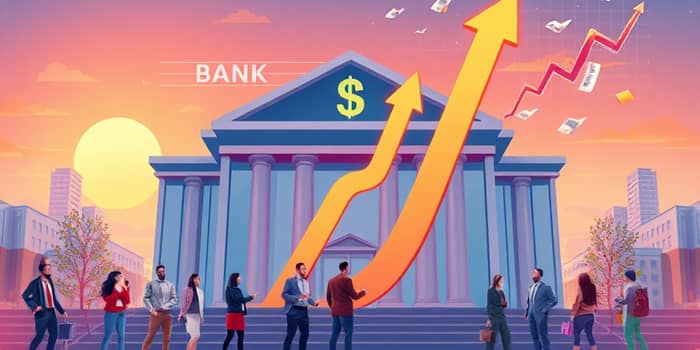
Over the first half of 2025, the U.S. banking sector has witnessed a remarkable upswing in profitability driven by a resurgent appetite for credit. Leading institutions reported a compelling narrative of earnings growth intertwined with calculated risk management. As stakeholders digest this dynamic trend, it becomes clear that the interplay between market appetite and strategic execution is reshaping the financial landscape.
In Q1 2025, the four largest U.S. banks collectively posted a 10.8% year-over-year earnings growth, underscoring the potency of their core operations. Across all FDIC-insured institutions, total net income reached $70.6 billion, a notable 5.8% increase from the prior quarter. The industry’s return on assets climbed to 1.16%, reflecting a six-basis-point quarter-over-quarter improvement and an eight-basis-point gain compared to a year earlier.
These figures highlight how institutions are capitalizing on market conditions. A blend of strategic lending and market activities drove net interest income and trading revenues higher. Executives point to disciplined balance-sheet management and heightened fee generation as twin engines powering performance.
Underlying the earnings surge is a sustained rise in lending activity. Average loan balances at major banks expanded by 2% year-over-year to $1.3 trillion in Q1 2025. Community banks posted even stronger growth at 4.9% year-over-year, with quarter-over-quarter gains of 0.8%. Projections for the 20 largest U.S. banks foresee a median net loan growth of 2.5% in 2025, while Bank of America leads the pack with an anticipated 3.9% increase.
Beyond lending, banks have tapped into diversified earnings streams beyond core lending. Non-interest income climbed 9.6% year-over-year, buoyed by trading gains, service charges, and advisory fees. This balanced revenue mix has buffered institutions against cyclical headwinds and deepened profitability.
Amidst the optimism, banks remain vigilant. Loan loss provisions at major players jumped, notably a 29.7% increase at JPMorgan Chase, signaling caution against potential credit deterioration. However, overall asset quality has remained stable, with only modest upticks in delinquency rates.
Regulators and analysts alike note that healthy consumer and business balance sheets have underpinned credit performance. Strong employment, solid corporate cash flows, and ample liquidity have kept default rates low. Yet, pockets of risk are on watch, particularly in sectors sensitive to interest rate fluctuations.
Looking under the hood, banks attribute success to a balanced approach to risk management and innovation. Capital and liquidity ratios remain robust, ensuring the capacity to fund expanding loan books without eroding safety buffers. Meanwhile, executives are spearheading investments in technology to streamline processes and enhance decision-making.
Leading institutions are deploying extensive use of artificial intelligence tools to refine credit underwriting, detect early signs of stress, and personalize loan offerings. This tech-driven transformation is complemented by talent development and process re-engineering.
As the economy navigates persistent inflation and elevated rates, banks face a nuanced horizon. Loan growth is expected to stay positive but modest, requiring a clear strategic vision for growth. The largest institutions will leverage scale and technology, while community banks will focus on niche relationships and local expertise.
Regulatory frameworks continue to evolve, ensuring that consumer deposits remain protected and that capital standards adapt to emerging risks. Investors and customers alike will watch how banks balance profit-seeking with prudence.
Beyond the balance sheet, the true story of 2025’s banking resurgence is one of resilience and foresight. By aligning robust loan demand with disciplined risk practices and forward-looking investments, banks have written a compelling chapter in their long-term narrative. Their journey offers lessons not only for financial institutions but for any organization striving to thrive amid uncertainty: embrace innovation, stay vigilant, and never lose sight of foundational strength.
References













